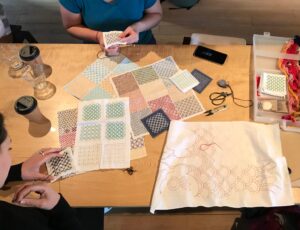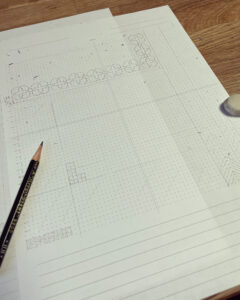Thread thickness choice guide (Hitomezashi)
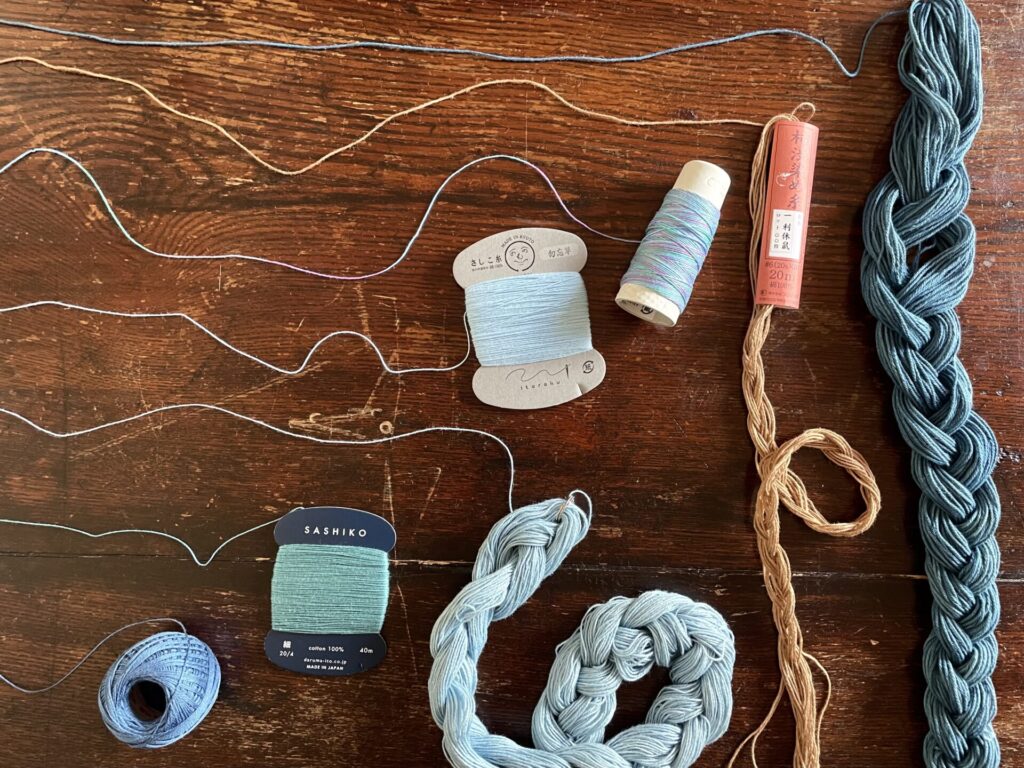
How should we distinguish different thickness of threads?
When you look for the sashiko threads, you'll find them in different thickness. Generally speaking, if the labels say "細" it means "thin" and "太" indicates "thick". But when we compare them from different manufacturers, the thread thickness varies greatly. For example, sometimes "太(thick)” threads from certain manufacturer are as thick as "細(thin)" from other brand.
Most importantly, it's all about preference and you can choose your favorite threads. But let me share some points of view as a standard for how to choose the thread thickness.
For Hitomezashi patterns
Hitomezashi sashiko requires grid lines. When stitching Hitomezashi patterns, you should choose the thread thickness depending on the grid size and the pattern. When stitching on the large grid, it's better to use medium/heavy weight sashiko threads. On the other hand, the thin threads go well with the smaller grid.
Look at this picture below. You may think that the white thread is thinner than the red one. Actually these two threads are almost same thickness and it looks different only because I worked on the different grid size. In this case, I should have used more thicker threads for 8mm grid, and more thinner threads for 5mm.

But how about the pre-printed sashiko cloths? All of the pre-printed sashiko cloths (for hitomezashi) are based on 5mm and you can't choose the grid size. In such a case, you should choose the thread thickness depending on the pattern. For the intricate patterns such as Kikko-hana-sashi, I recommend you to use thin threads. For more simple patterns like Hana-sashi or Kome-sashi, using the midium/heavy-weight threads will give them a texture.
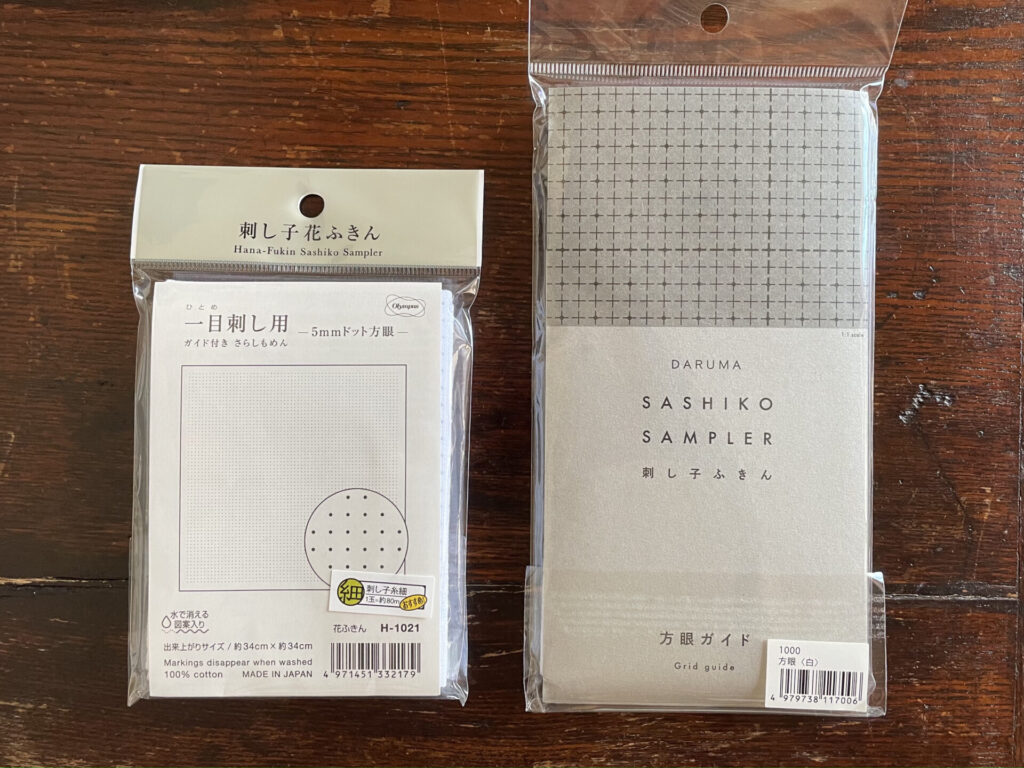
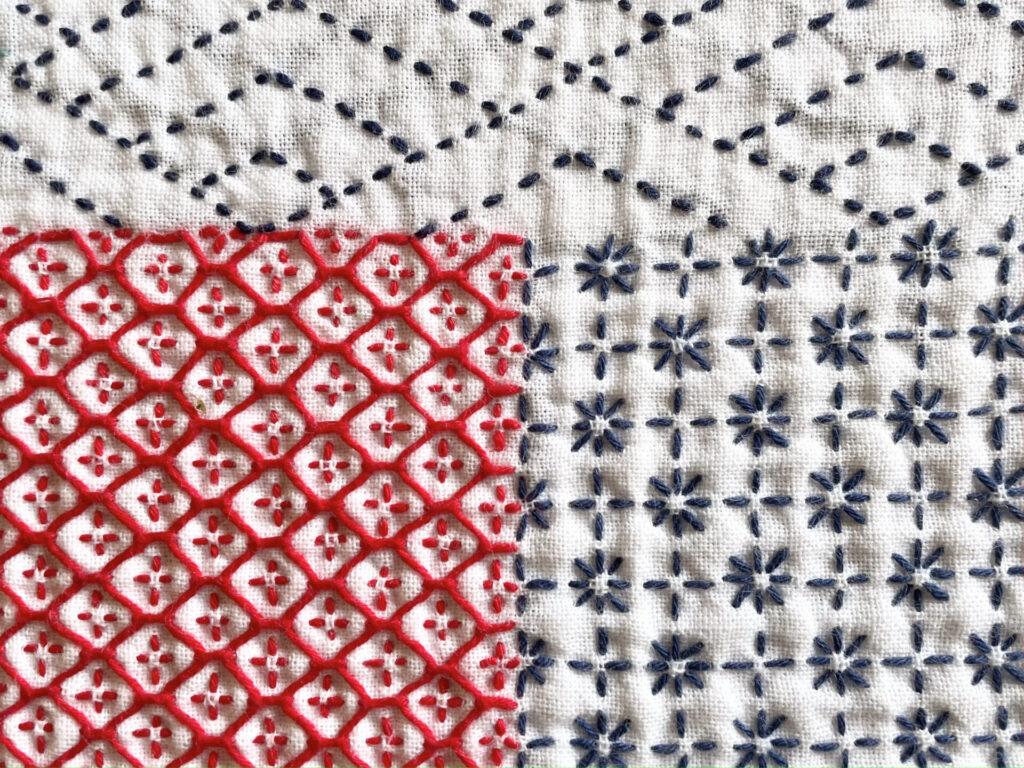
Choose the thickness for a certain effect.
Based on those standards, you can also choose the thread thickness aiming for a certain effect. In the picture below, I used three different blueish threads. Two for the weaving and one for the stitching.
After stitching the straight lines with medium weight threads, I added the weaving with thin and thick threads. By using two different thickness, I aimed for adding a certain rhythm on the weaving.
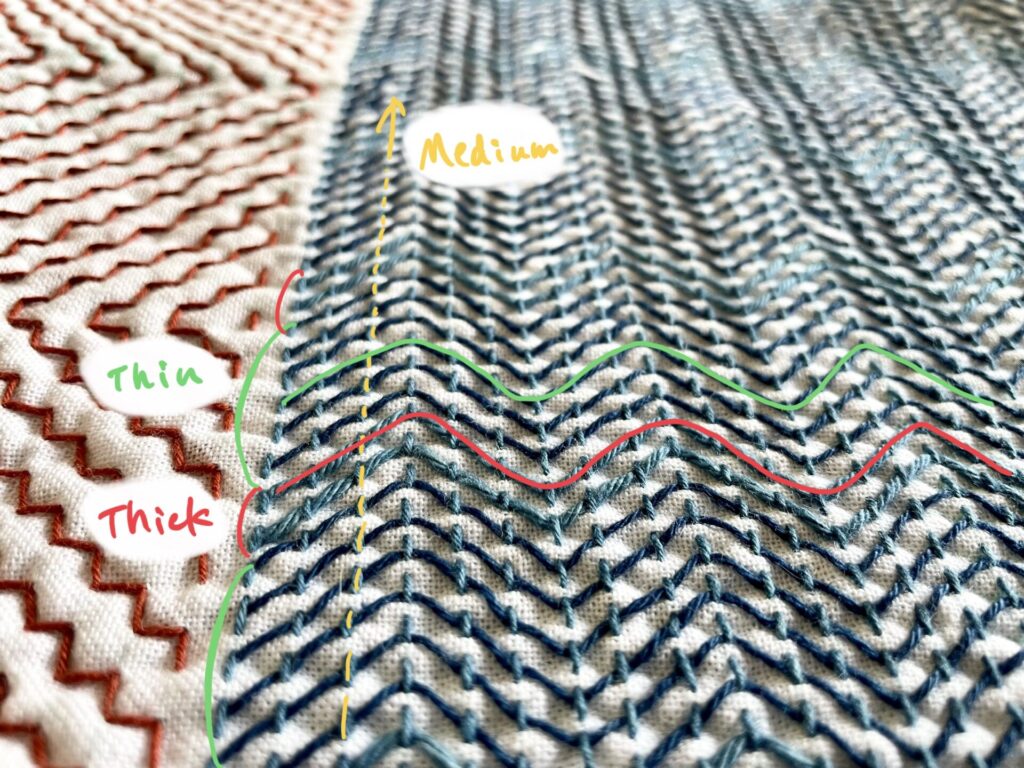
To sum up, you can choose the thread thickness according to your preference. But still, knowing some standards might help you when choosing the perfect threads for your project. Happy stitching!

